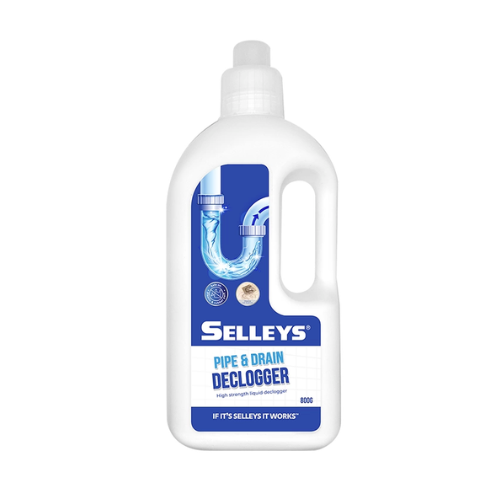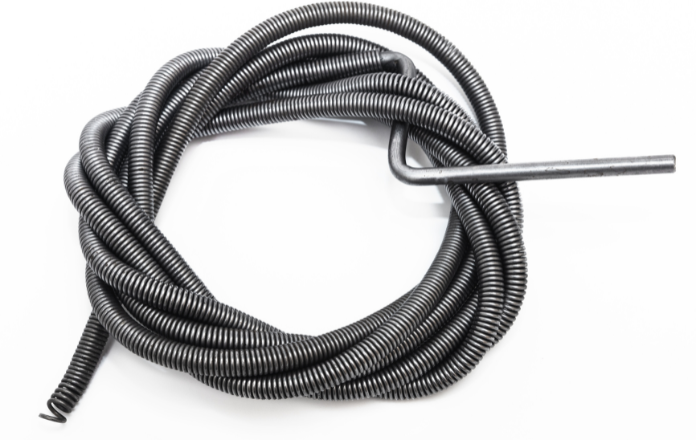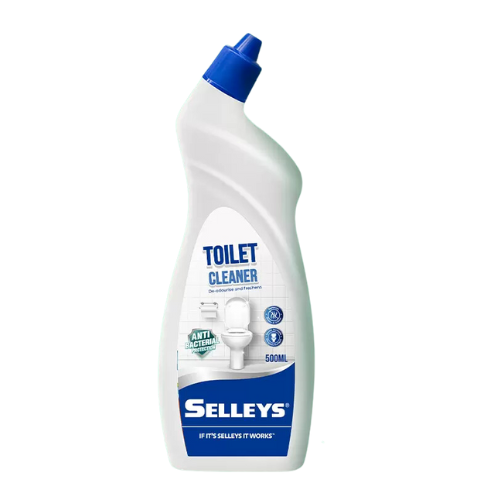Your cart is currently empty!
Clogged toilet pipes can bring about a great deal of inconvenience as they can lead to overflowing toilets and unpleasant odours. Thankfully, you can clean toilet pipes with the right tools and cleaning methods.
In this article, we’ll highlight the common causes of this problem, cover some of the most effective ways to clean toilet pipes and provide tips to prevent future clogs.
Table of Contents
Causes Of Toilet Clogs
Toilet pipes can become clogged due to a variety of reasons, including:
- Accumulation of hair
- Flushing down too much toilet paper
- Flushing inappropriate materials down the toilet, such as female hygiene products, toys and toilet bowl fresheners
- Mineral deposits left behind by hard water
- Old or damaged pipes which are more susceptible to clogs
Chemical Methods To Clean Toilet Pipes
There are various chemical cleaners available in the market that you can use to keep your toilet pipes clean.
Note!
Before attempting any of the cleaning methods listed below, you should wear protective gear such as gloves and goggles. This helps to protect you from spills and harmful substances that may be present in the pipes.
Method 1: Baking soda and vinegar
A mixture of baking soda and vinegar is one of the natural ways to unclog toilet pipes. When these two ingredients are combined, they create a chemical reaction that can break down and dissolve clogs.
Step 1: Pour baking soda and vinegar into the toilet
Pour the baking soda first, followed by an equal portion of vinegar. For minor clogs, you can use about a half cup of each ingredient. For severe clogs, increase the quantity to one-half cup.
Step 2: Leave the mixture for a few minutes
When the baking soda and vinegar combine, fizzing will occur but it should subside quickly. Let the mixture sit undisturbed for a few minutes for it to work its magic.
Step 3: Pour hot water
Fill a kettle or pot with hot water and pour it down the toilet bowl.
Step 4: Ensure the clog is removed
Listen for a suction sound which indicates that the clog has been cleared. The water should drain smoothly now.
Step 5: Flush the toilet
Flush the toilet once or twice to ensure that it’s functioning properly.
Method 2: Hot water with dish detergent
Dish detergent can lubricate and break down greasy residue while hot water can dissolve items causing blockage in the pipes. However, avoid using water that is boiling hot as it can cause your toilet bowl to crack.
Step 1: Prepare hot water
Heat up a gallon of water such that it’s hot but not boiling.
Step 2: Pour detergent into the toilet bowl
Pour half a cup of dish detergent down the toilet bowl.
Step 3: Add hot water
Carefully pour the hot water into the toilet bowl and let the mixture sit for about 15 minutes. This will allow the hot water and dish detergent to dissolve the clog.
Step 4: Ensure the toilet can be flushed properly
Flush the toilet to see if the clog has been cleared. If the water drains out normally, the clog has been removed.
Method 3: Pipeline dredge powder/liquid
If your toilet still remains clogged after trying the above methods, you may need to use a more powerful solution such as Selleys Pipe & Drain Declogger.
This liquid declogger can effectively break down blockages in your toilet pipes caused by hair and grease. It can also eliminate any unwanted odours coming from your pipes.
With its anti-bacterial formula, you can keep both you and your loved ones safe from germs and bacteria found in the toilet.
Step 1: Read the instructions on the product label
Always read and follow the instructions on the product label carefully. Look for the appropriate amount to use and how long you should let the solution sit before flushing.
If you’re using Selleys Pipe & Drain Declogger, use up to 1 bottle of the solution, depending on the severity of the blockage.
Step 2: Pour the solution down the toilet
Pour the recommended amount of product down the toilet. Be careful not to splash any onto your skin or clothing. Allow the solution to sit for the duration as directed on the product label. For Selleys Pipe & Drain Declogger, leave the solution to sit for 4 – 8 hours.
Step 3: Flush the toilet to see if the clog has been removed
Once the time is up, flush the toilet several times to ensure that the blockage has been cleared. If it isn’t fully cleared, repeat steps 1 and 2 with a larger amount of Selleys Pipe & Drain Declogger and leave it to sit for a longer duration.
Mechanical Methods To Clean Toilet Pipes
If you’re looking for a chemical-free way to clean your toilet pipes, here are some alternatives you can consider.
Method 4: Auger
An auger, also known as a plumbing snake or drain snake, is a coiled metal cable that can be extended and retracted by turning a handle or crank.
The curved end of the auger can navigate through the twists and turns of the pipes which can be difficult for other types of tools to access.
Step 1: Insert the auger into the toilet bowl
Insert the coiled end of the auger into the toilet bowl and slowly push it down the drain until it reaches the obstruction.
Step 2: Twist the auger
Rotate the handle or crank of the auger to turn the cable. Keep turning until the cable breaks up the clog.
Step 3: Gently pull out the auger
Once you have cleared the obstruction, gently pull out the auger to avoid scratching the surface of the toilet bowl.
Step 4: Check if the blockage has been resolved
Flush the toilet to check if the clog has been cleared. If water drains easily, the clog has been successfully removed.
Method 5: Coat Hanger
Using a coat hanger can be a quick and easy way to unclog toilet pipes if the blockage is in the first few inches of the drain. But not all coat hangers are suitable for the job! You’ll need a wire coat hanger which can be easily unwound and manoeuvred down the drain.
To determine if the clog is deep or shallow, you can try flushing the toilet. If the water level in the bowl rises and doesn’t drain, it’s likely that the clog is shallow and can be cleared with a coat hanger. However, if the water drains slowly or not at all, the clog may be deeper down the pipes and will require a more powerful tool to clear.
These are the steps for using a coat hanger to clean a toilet pipe:
Step 1: Straighten the coat hanger
Straighten out a wire coat hanger, leaving the hook intact.
Step 2: Insert the hanger into the toilet bowl
Insert the hook end of the coat hanger into the toilet bowl and manoeuvre it down the drain until you reach the blockage.
Step 3: Dislodge the clog
Attempt to dislodge the clog by wiggling the coat hanger around. Once you feel that the blockage has loosened, pull the coat hanger back up.
Step 4: Flush and check
Flush the toilet a few times to ensure the blockage has been cleared.
Method 6: Plunger
A fast and simple way to clear clogs is to use a plunger, which can be easily bought in hardware stores. Here are the steps to follow.
Step 1: Place the plunger in the toilet bowl
Place the plunger over the drainage hole in the toilet bowl, making sure it seals the entire circumference of the hole.
Step 2: Fill the toilet bowl with enough water to cover the head of the plunger
Make sure there’s enough water in the toilet bowl to cover the head of the plunger. If not, add water until the plunger is covered.
Step 3: Pump the plunger
Push down on the plunger to create suction, then pull up quickly to create a vacuum. Repeat this motion several times.
Step 4: Flush and check if the blockage persists
Check to see if the water level in the toilet bowl has gone down. If it has, flush the toilet to remove any remaining debris and see if it drains properly. If it hasn’t, repeat the plunging process a few more times.
How To Prevent Toilet Clogs
These are some simple steps you can take to reduce the chances of blockages happening.
1. Close the toilet lid
Small objects such as hairpins, jewellery and even toys can easily fall into the toilet bowl and get stuck in the pipes, leading to a clog. Keeping the toilet lid closed when it’s not in use is a good practice that can prevent all sorts of items from accidentally falling into the toilet bowl and causing clogs.
2. Don’t flush all the toilet paper in one go
While it’s generally a good idea to use less toilet paper to prevent clogs, there may be times when you need to use more. In those cases, flushing several times as you go along can be a helpful strategy to prevent the toilet from potentially clogging.
Flushing smaller amounts of waste and toilet paper at a time gives the toilet enough time to flush properly and avoids overloading the pipes.
3. Keep the top of your toilet tank clean
Avoid putting items such as brushes, tissue paper and soap on the top of your toilet tank. These items can accidentally fall into the toilet bowl and cause clogs or other plumbing issues.
4. Regular cleaning
Minerals, bacteria and other substances can build up in the toilet bowl or pipes, causing blockages or other drainage issues. By cleaning your toilet on a regular basis, you can remove these substances before they start to clog.
Selleys Toilet Cleaner is designed to remove tough stains and bacteria from your toilet bowl. The thick formula clings to the sides of the toilet to dissolve stains, dirt and grime. In addition, it can effectively eliminate odours and keep your bathroom smelling fresh and clean.
With its gentle and effective formula, you can maintain a clean and hygienic bathroom for you and your family.
FAQs About Cleaning Toilet Pipes
Can I use bleach to clean toilet pipes?
No, it’s dangerous to do so. Bleach can potentially react with other substances in the pipes, which may result in the release of harmful fumes.
Are drain cleaners safe for toilets?
Enzymatic drain cleaners are generally considered to be safe for toilets as they are gentle on the plumbing system and are less likely to cause damage to the pipes. Chemical drain cleaners, on the other hand, are not safe for toilets as they can be harsh and may potentially damage the pipes and other components of the plumbing system.




